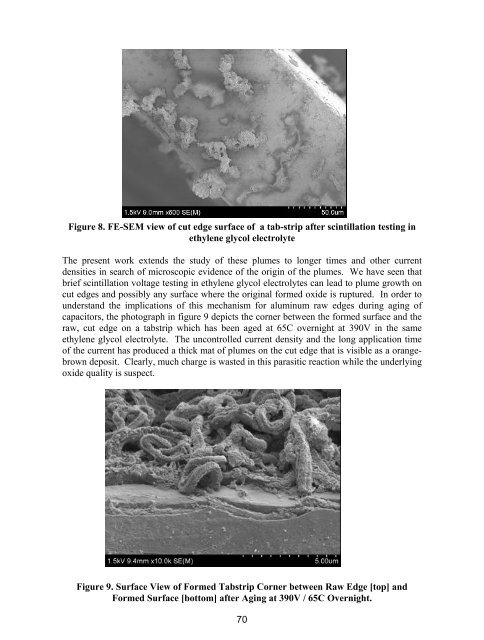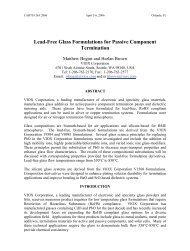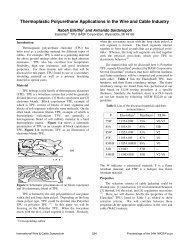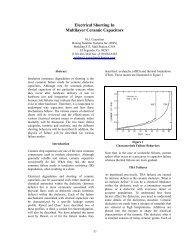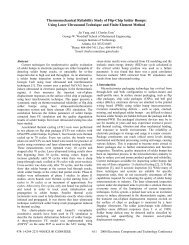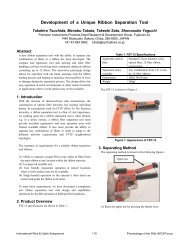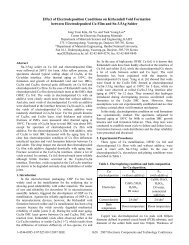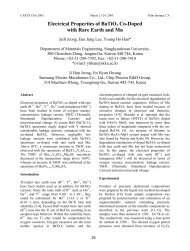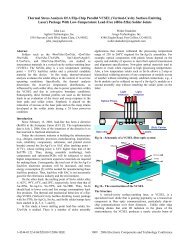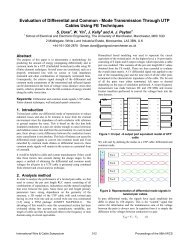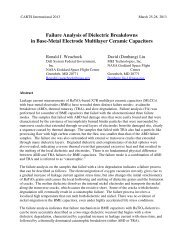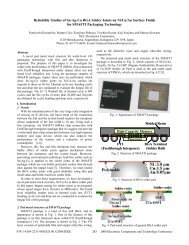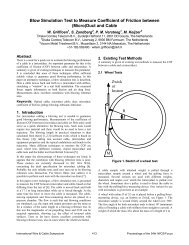Dielectric Aluminum Oxides: Nano-Structural Features and ...
Dielectric Aluminum Oxides: Nano-Structural Features and ...
Dielectric Aluminum Oxides: Nano-Structural Features and ...
You also want an ePaper? Increase the reach of your titles
YUMPU automatically turns print PDFs into web optimized ePapers that Google loves.
Figure 8. FE-SEM view of cut edge surface of a tab-strip after scintillation testing in<br />
ethylene glycol electrolyte<br />
The present work extends the study of these plumes to longer times <strong>and</strong> other current<br />
densities in search of microscopic evidence of the origin of the plumes. We have seen that<br />
brief scintillation voltage testing in ethylene glycol electrolytes can lead to plume growth on<br />
cut edges <strong>and</strong> possibly any surface where the original formed oxide is ruptured. In order to<br />
underst<strong>and</strong> the implications of this mechanism for aluminum raw edges during aging of<br />
capacitors, the photograph in figure 9 depicts the corner between the formed surface <strong>and</strong> the<br />
raw, cut edge on a tabstrip which has been aged at 65C overnight at 390V in the same<br />
ethylene glycol electrolyte. The uncontrolled current density <strong>and</strong> the long application time<br />
of the current has produced a thick mat of plumes on the cut edge that is visible as a orangebrown<br />
deposit. Clearly, much charge is wasted in this parasitic reaction while the underlying<br />
oxide quality is suspect.<br />
Figure 9. Surface View of Formed Tabstrip Corner between Raw Edge [top] <strong>and</strong><br />
Formed Surface [bottom] after Aging at 390V / 65C Overnight.<br />
70


